Do-it-yourself buleryan oven: a master class on making a miracle stove
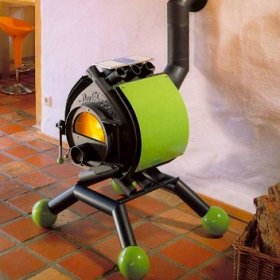
In the world of autonomous heating, such a useful device as the Buleryan furnace, also known as Breneran, occupies the last place. Roughly speaking, it consists of a firebox, to which a number of bent tubes are connected. This design allows you to burn firewood and other solid fuels with very high efficiency. The cost of industrial models starts from two hundred dollars and increases depending on the size of the furnace. Although the design of such a furnace is somewhat more complicated than that of an ordinary potbelly stove, many masters managed to make buleryan with their own hands.
Content
How does this design work?
Buleryan can be called a very successful hybrid of a stove and a long-burning wood-burning stove. The device uses the principle of forced convection. A number of curved tubes above and below are connected to the firebox. Cold air enters the lower holes, which quickly heats up, since the pipes come in direct contact with the furnace. Hot air enters the rooms through the upper openings. Its temperature is so high that it allows you to heat not only one specific room, but even a two-story house. There is also the possibility of combining the Buleryan stove with a water heating circuit. At the same time, the surface of the device itself remains not too hot and poses no danger to others.
Thanks to a number of simple adjusting devices, the furnace can operate in two modes. First, a quick heating of the furnace is provided, and then a uniform distribution of the received heat throughout the room is ensured. At the second stage, the furnace goes into slow burning mode. In the beginning, the fuel needs to be planted quite often, but as soon as the stove warms up, the furnace can be loaded only twice a day, i.e. every 12 hours.
Firewood burns in the furnace, and the products of this process through convection pipes enter the secondary combustion chamber. Here, the gas-air mixture is burned at very high temperatures, which ensures the device efficiency in the region of 80%. Further, convection pipes spread hot air throughout the room.
The process of operating the Buleryan furnace is graphically presented in the video:
The layout of the classic "Buleryana"
To successfully make such a furnace yourself, you should first of all study its structure. This is an all-metal construction consisting of a firebox and a series of bent metal tubes adjacent to it. A door is equipped ahead, through which fuel is loaded, as well as a power adjustment device, with which you can change the combustion modes. In the furnace, a secondary combustion chamber is equipped and a pipe is discharged under the chimney.

In this diagram, the device of the Buleryan furnace is presented in detail.The main distinguishing feature of the design is a series of curved hollow tubes that are connected to a two-chamber firebox
To increase the efficiency of using the Buleryan furnace, it is recommended to perform thorough thermal insulation of the chimney, for example, with a layer of mineral wool with a thickness of at least 3 mm.
Of course, you will need a blower through which the air necessary for the combustion of fuel will enter the furnace. You can arrange a small ash pan, although in the process of slow burning of waste almost no waste is formed. The double back wall allows you to make the device work even more efficiently. In some models, a two-layer case is used for this.
Step-by-step instruction in manufacturing
To make a Buleryan furnace with your own hands, you need to stock up on metal pipes with an outer diameter of about 50-60 mm, as well as sheet metal. To withstand high combustion temperatures, it is recommended to use steel sheets with a thickness of 4-6 mm. In addition to a welding machine and a standard set of tools, you will also need a pipe bender.
Next, you must do:
- Making bent pipe sections.
- The manufacture of smoke exhaust and condensate collection devices.
- Making dampers for blower and exhaust.
- Making a door for a combustion chamber.
- Weld the frame from bent pipes and install a partition in it.
- Welding metal sheets in the space between pipes.
- Mounting the door with a lock.
- Production and welding of metal legs.
Eight identical sections should be cut from the pipe, about 1.2 m long. Using a pipe bender, they are bent with a radius of 225 mm and placed in a checkerboard pattern.
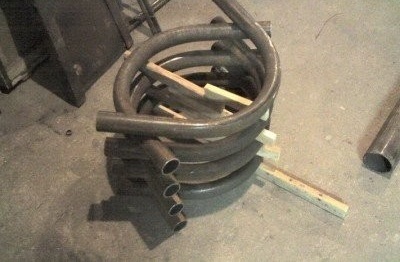
To make the hollow pipes necessary for the furnace, you need to prepare eight pieces of pipe, 1.2 meters long, and bend them to a radius of 225 mm using a pipe bender
To remove smoke, as well as accumulated moisture, a T-shaped device is made, through which smoke will go up into the pipe, and moisture will drain down. To remove moisture at the bottom put a special faucet. The moisture removal valve should only be opened for these purposes and then closed so as not to impair traction.
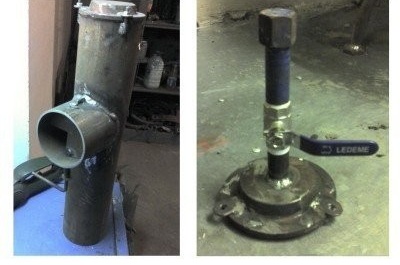
Left: A device for removing smoke from a T-shaped furnace is designed not only to remove smoke, but also to collect condensate.
Right: The condensate drain valve is located at the bottom of the smoke exhaust and condensate collection device. Open it only if necessary, so as not to impair traction.
To remove smoke from the stove, a special shutter is made, with the help of which traction is also regulated.
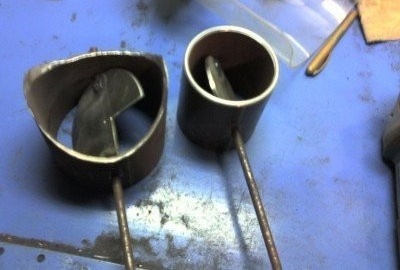
The damper for regulating the furnace power is made with a special hole that allows you to change the draft, but does not completely block the chimney
For the blower, which is located on the front door, a blank shutter should be made. To ensure that the shutters are securely locked in the correct position, a spring is used.
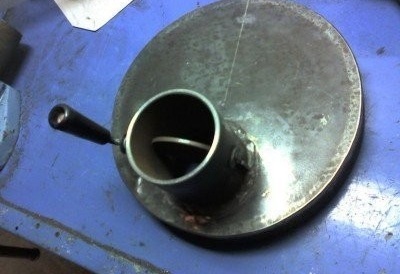
The blower damper, which is located on the front door, must be deaf. This ensures maximum efficiency of the stove in the mode of slow burning
The most difficult element of the self-made Buleryan is, perhaps, the front door. It should close almost hermetically. The better the door adjoins the stove, the more efficiently Buleryan works.
Two rings are made from a large-diameter pipe, which almost tightly fit one into the other. To do this, cut two 40-mm pieces from a pipe with a diameter of 350 mm. One of the segments is cut and deployed. After that, the front side of the stove is made using a ring of smaller diameter.
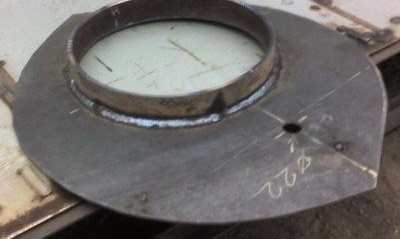
A circular hole should be made in the front wall of the furnace to which a metal ring is welded. This element is necessary so that the door closes as tightly as possible.
The second ring is used when mounting the door, it is welded to a circle of sheet metal.
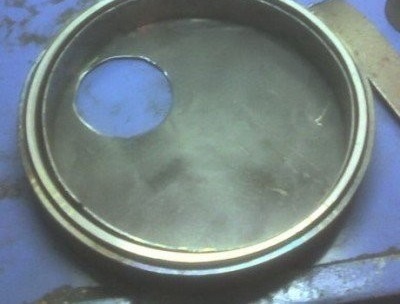
Two metal rings are welded around the edge of the oven door, the diameter of which is slightly different. They are sealed with a special gasket made of asbestos cord
Then another ring is welded onto the door, which should be slightly smaller than the diameter of the ring located on the front of the stove. A sealing asbestos cord is laid in the gap formed between the door rings and the damper is mounted.
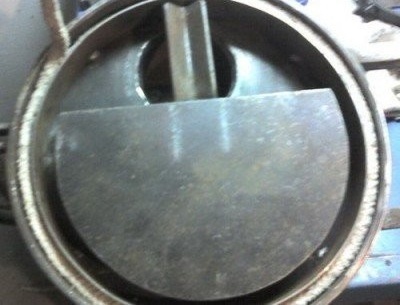
To complete the installation of the front door of the furnace, it is necessary to weld a blower pipe with a damper to it. The damper is equipped with a spring for a snug fit
Now you should return to the bent pipes. In the first two pipes, it is necessary to make holes and weld the injection tubes into them. These are small metal elements with a diameter of 14-15 mm and a length of about 150 mm. They are necessary to ensure the connection of convection elements with the furnace.
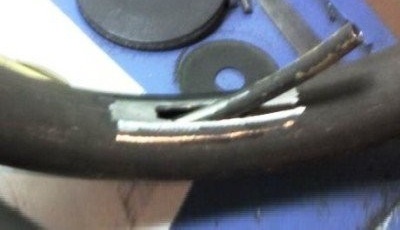
Special injectors should be inserted into the first two hollow pipes of the furnace, which will ensure air contact with the combustion chamber
From the pipes, the frame of the stove with a partition is cooked. For a partition it is recommended to use sheet steel not less than 6 mm thick.
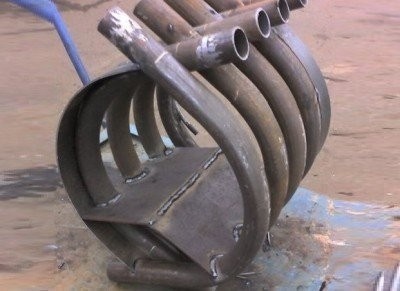
For the partition walls of the furnace used to become 6 mm thick. In order not to have to “guess” with the sizes, first they make cardboard patterns
After this, the gaps between the pipes should be closed with strips of sheet metal, and the back wall should be welded, thus forming the furnace body.
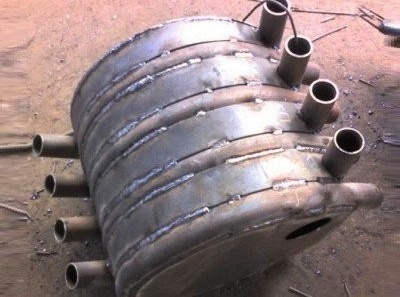
The furnace body is formed from pieces of metal that are welded in the space between the hollow pipes. Cardboard patterns are also useful for their manufacture.
In order to accurately cut the elements of the partition, the back wall and strips of metal, it is recommended to first make cardboard patterns.
It is recommended to make a special lock for the door. It is an eccentric that fixes a metal loop located on the wall of the stove. With further scrolling, this device ensures the closest fit of the door to the stove. To make such a device, you will need to perform a series of turning and milling operations.
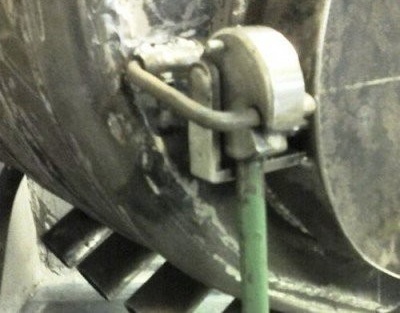
The lock for the oven door is not easy to make. Inexperienced craftsmen should seek the help of a professional turner or milling machine operator.
It remains only to make hinges and hang the door, as well as cut, bend and weld the legs of the stove.
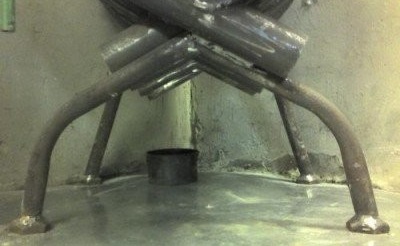
The legs for the furnace can be made from suitable thin tubes, giving them the necessary shape using a pipe bender or improvised tools
The manufacturing process of Buleryan can hardly be called simple, making an ordinary potbelly stove much easier. But the ease of use and high efficiency fully justify the time and effort spent.
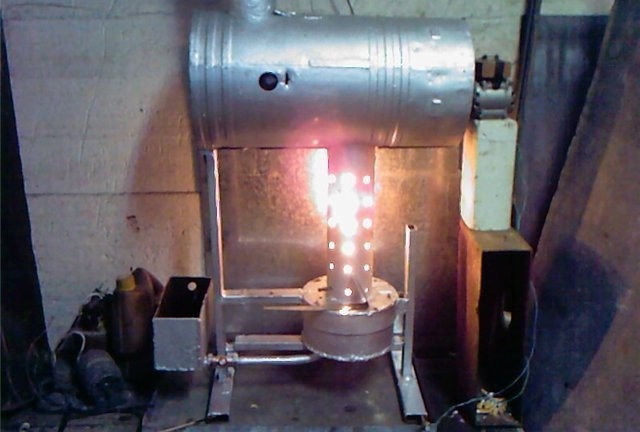
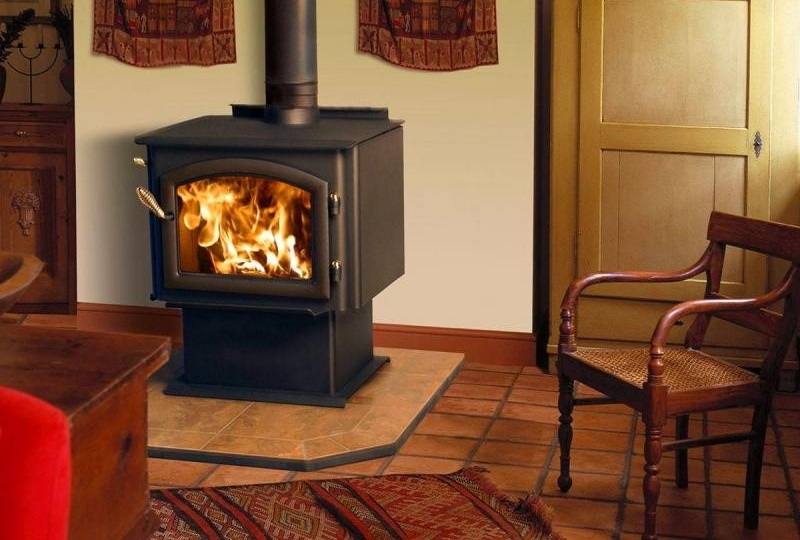
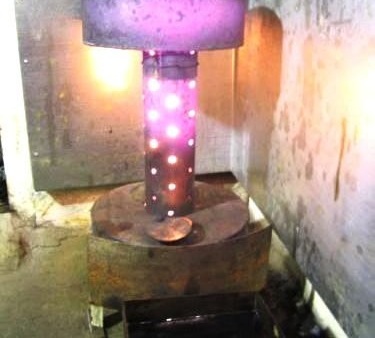
5 comments